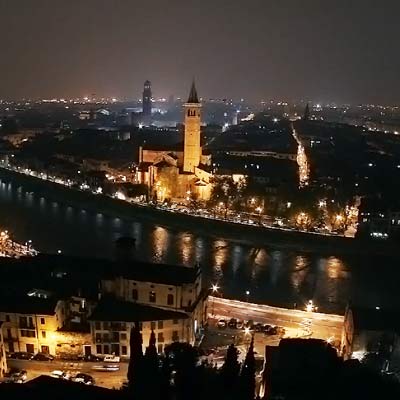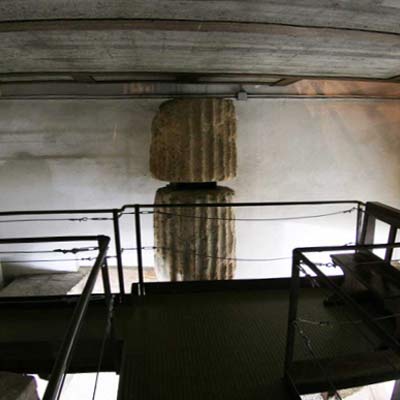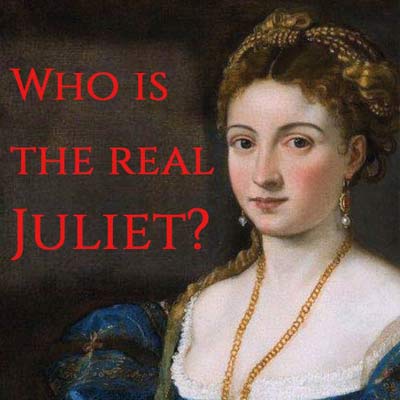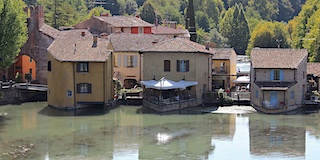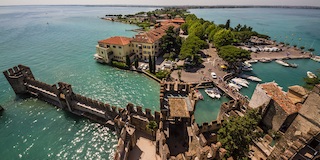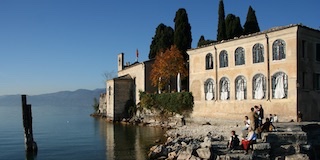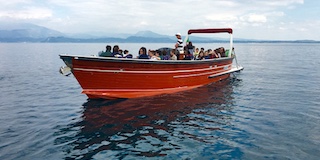Il Vittoriale degli Italiani
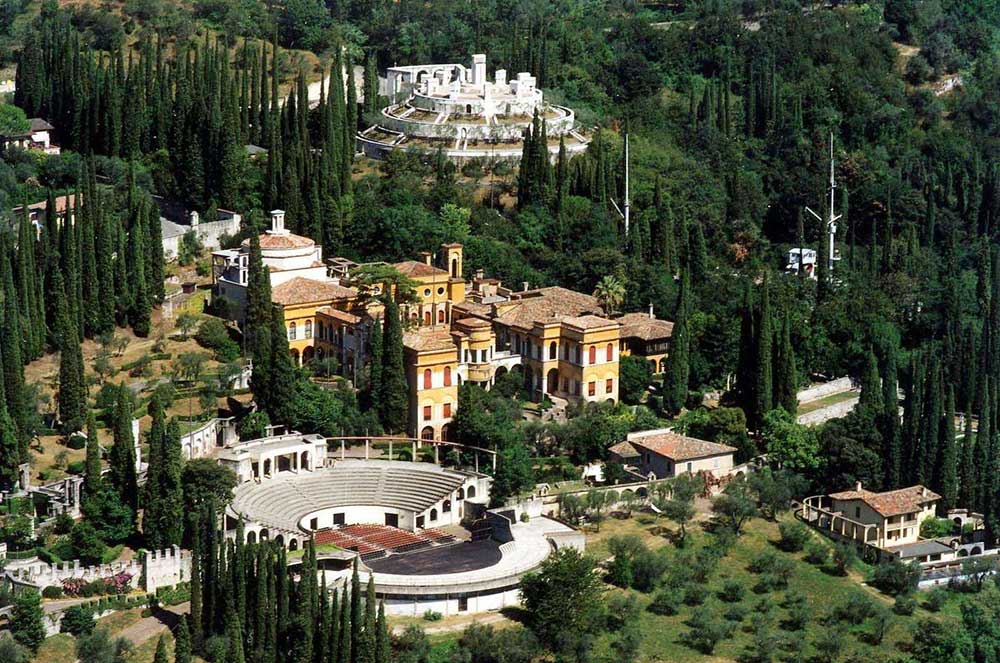
You might have never heard of Gabriele D'Annunzio but he has been one of the most important figures in the Italian artistic, literary and political scene between the 19th and 20th centuries. He greatly contributed in shaping modern Italy but, because of his involvement with fascism, at least from a cultural point of view, he has been somehow overshadowed in the post world war era.
He spent the last years of his life in a sumptuous villa in Gardone, on the western side of lake Garda, that he shaped as a sort of museum of his life, works and deeds. He named it Vittoriale degli Italiani: Italians Victory Memorial, and left it as a heritage to all Italians, therefore today it is open to the public.
Oncoming Tours
Guided tour at Vittoriale:
+39 333 2199 645 info@veronissima.com P.I. 03616420232 C.F. CPPMHL74L13L781C
Guided Tours of Vittoriale
A guided tour of the Vittoriale degli italiani is an opportunity to enter the life and artistic universe of Gabriele D'Annunzio, spending a few hours in an extraordinary and sometimes surreal place, surrounded by a huge park that offers wonderful views of Lake Garda.
The tour of the Vittoriale degli Italiani is a useful didactic tool for students, allowing them to deepen their knowledge of many historical, artistic and literary themes of 20th century Italy. In addition to the importance of the figure of Gabriele D'Annunzio as an artist, the facts that saw him as a protagonist during and after the First World War, whose relics can be seen at the Vittoriale, allow students to better understand the Italian political situation that led to Fascism, with its rhetoric and communication that took much from the language and aesthetics of D'Annunzio.
The architectural style of the Vittoriale and many of its outbuildings created by the architect Giancarlo Maroni in close collaboration with D'Annunzio himself, also makes it possible to deepen the knowledge of deco style, an artistic movement often neglected but which had a strong and important development in Italy.
The Vittoriale degli Italiani is a perfect destination for a day trip from the surrounding areas or for those who stay on Lake Garda and want to spend a few hours immersed in nature in a timeless place.
It is also ideal for foreign visitors who will get to know a figure and historical events that have contributed greatly to the formation of contemporary Italian culture but which are unknown to most and far from the usual Italian stereotypes.
Gabriele D'Annunzio
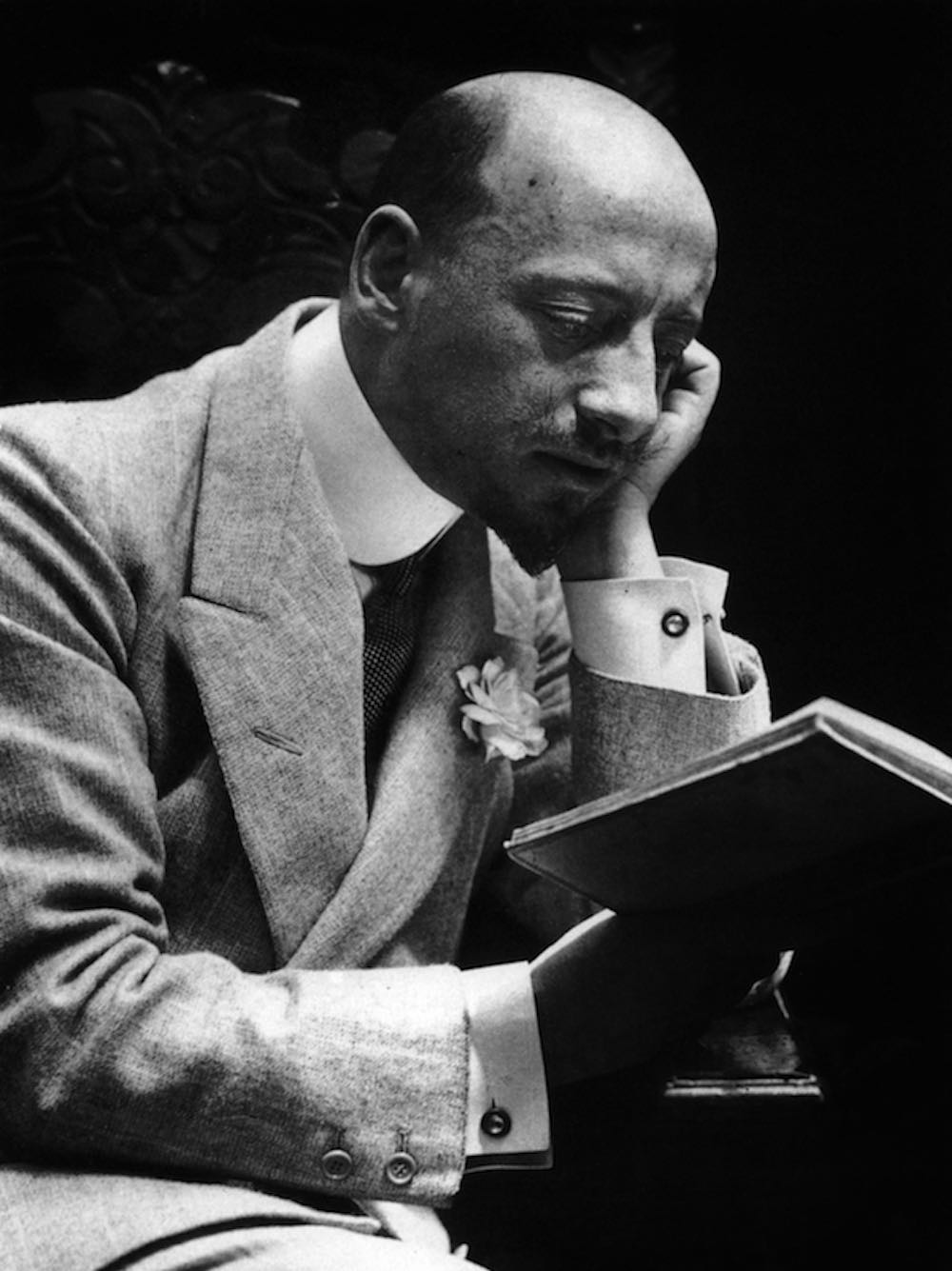
Central to the understanding of the Vittoriale degli Italiani is the multifaceted figure of Gabriele D'Annunzio. Successful poet and writer, dandy and womanizer, soldier, patriot, political agitator. He was born in 1863 in Pescara (central Italy) and after completing his classical studies he moved to Rome where he animated the literary salons and worldly life, publishing "Il Piacere" (The Pleasure), a novel forerunner of themes that would later be taken up by works such as "La dolce vita" or "La grande bellezza" (“The great beauty”). In his vast production D'Annunzio moved from poetry to novel, from plays to screenplays for early cinema productions, he even became a copywriter for advertising, adhering to the artistic currents of the time, realism, symbolism and decadentism, drawing inspiration from Russian novels, or following Futurist topics such as flight and speed. In all this he maintained a very personal, refined style, which made him very popular and extremely influential on the aesthetics of the time, also thanks to his very original lifestyle characterised by hedonism and dandyism.
The First World War
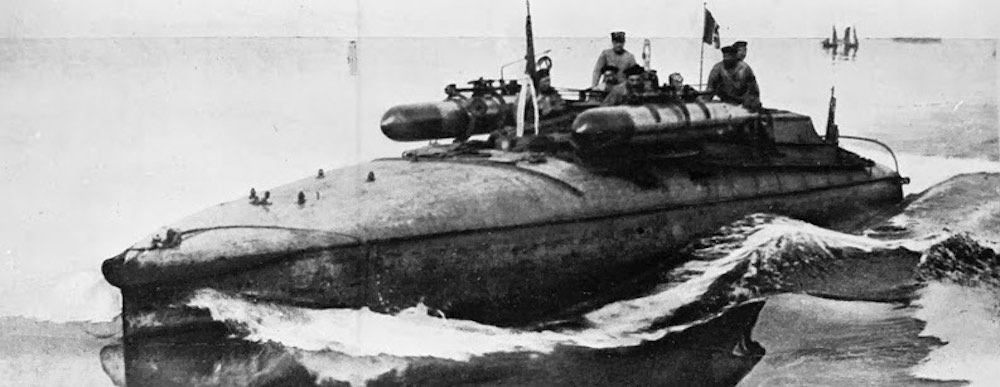
Gabriele D'Annunzio was a passionate interventionist. At the outbreak of the First World War he participated personally in military enterprises, some of which had a great propagandistic impact. In 1918, he was on board a small fleet of three armed torpedo motorboats (MAS) which entered deep into Austrian-controlled territory, penetrated the Bay of Buccari (today in Croatia) and hit some enemy ships. Many believed that the great enthusiasm aroused by this reckless enterprise, which was called the Buccari Mockery (Beffa di Buccari), helped to raise national morale after the defeat of Caporetto. Also of 1918 is the famous Flight over Vienna. At the head of a squadron of airplanes, D'Annunzio again entered Austrian territory and reached Vienna where, instead of bombs, he threw thousands of propaganda flyers on the city.
The Feat of Fiume
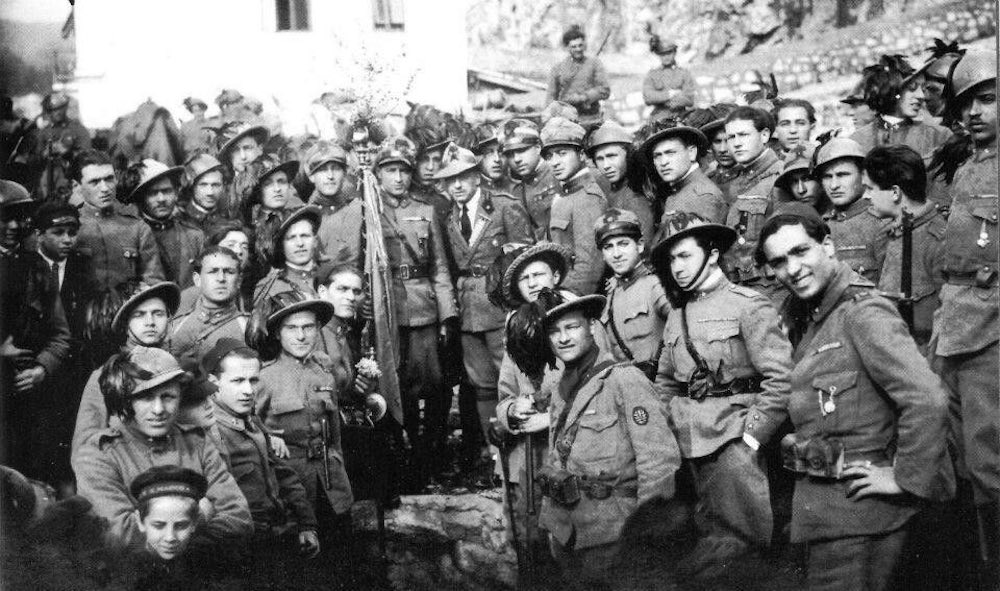
At the end of the war conflict, Gabriele d'Annunzio fiercely opposed what he himself called the "mutilated victory" that came out of the Versailles Conference, which denied Italy numerous territorial claims that had been the purpose of its entry into the war, including Dalmatia, annexed instead to Croatia. D'Annunzio leading an army of veterans, nationalists, adventurers, occupied the city of Fiume (Rijeka) for more than a year resisting international pressure and the Italian government itself. In the end he had to give in, even after a military intervention, and accept the conditions dictated by international treaties. Ideals, rhetoric and many of the legionnaires of Fiume experience were instead brought together in the Fascist movement that was born shortly afterwards.
The Lake Garda Retreat
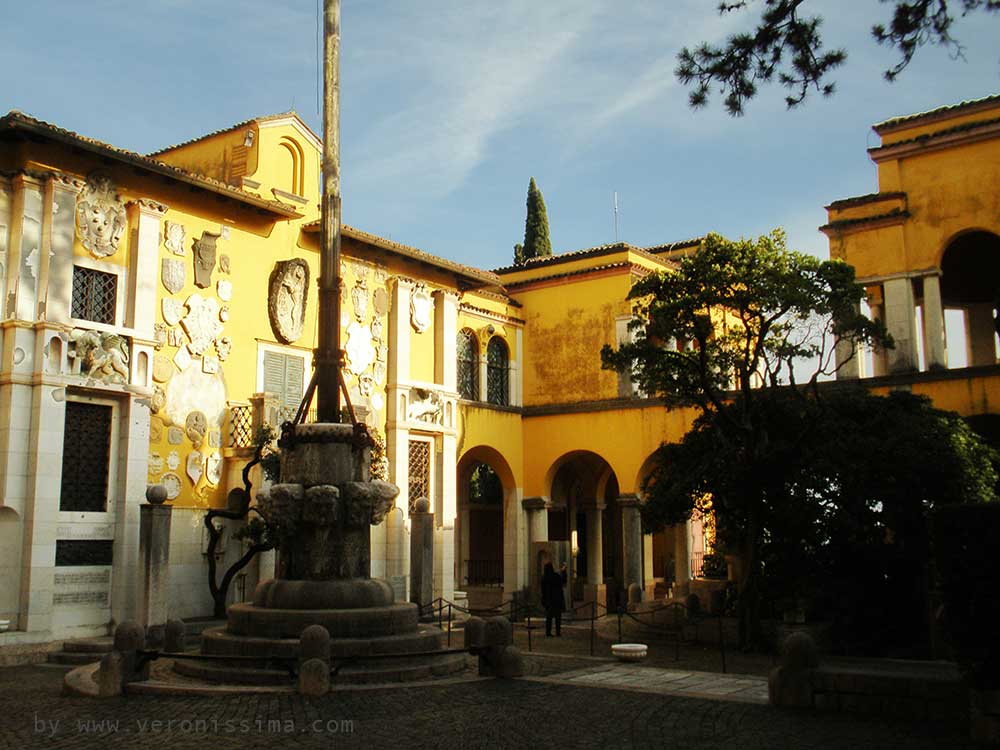
Disappointed and embittered by the sad epilogue of the adventure in Fiume, Gabriele D'Annunzio withdrew from public life and locked himself in a sort of golden exile in the villa he had bought in Gardone, a small village not far from Salò, on the west coast of Lake Garda. The last years of Gabriele D'Annunzio's life were dedicated to the restoration and renovation of the new residence according to his decadent taste and aesthetics, a mixture of deco and neo-baroque, which he himself christened "Vittoriale degli Italiani" and in which he accumulated memories and relics of a lifetime. Upon his death, according to his will, the villa in Gardone was donated to the Italian people, becoming a museum-sacrarium dedicated to his figure as an artist, his nationalist ideals and his war exploits. Today the villa with its large park is governed by a trust and regularly open to the public. In summer, concerts and performances are held in the open-air theatre, commissioned by D'Annunzio on the model of Greek theatres.
The Visit of the Villa
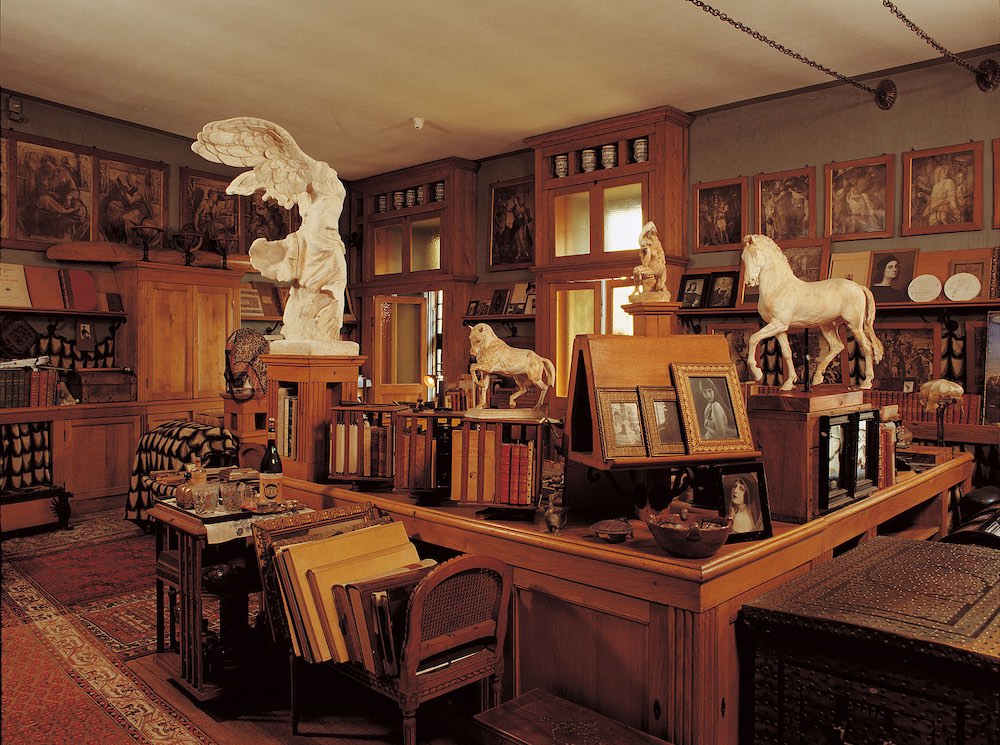
The numerous rooms with their furnishings, objects, ornaments are preserved exactly as if D'Annunzio and the strange entourage that animated the villa had left no more than five minutes ago. In them the taste of an era has been preserved intact, influenced by the all-encompassing aesthetics of the poet. Upholstery, carpets, furniture, sculptures, objects, many of which designed by D'Annunzio himself, endlessly accumulating in each room, each dominated by a specific symbolic-artistic theme such as the Room of the Maskmaker, the Room of Leda, the Dalmatian Oratory, the Room of the Leper, the Halfhand's Writer, etc.. The material creator of the Vittoriale was the architect Giancarlo Maroni, D'Annunzio's alter ego, who had the task of realizing the ideas and visions of the poet. The architect Maroni stated that even after his death, D'Annunzio continued to appear to him in his dreams suggesting ideas and solutions to complete what had remained unfinished.
The Vittoriale Park
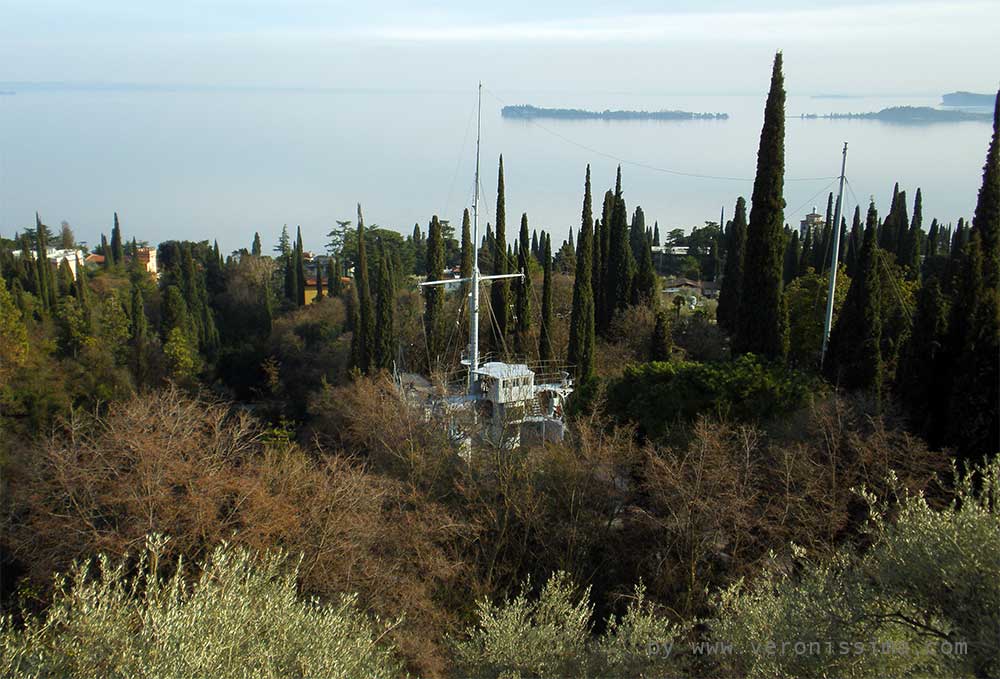
In addition to a visit to the interior of the villa in Gardone, a good part of the visit to the Vittoriale degli Italiani takes place in the large park and in the buildings scattered around it that preserve some surprising relics related to Gabriele D'Annunzio's exploits, such as the MAS motorboat used in Beffa di Buccari, and the warship Puglia, involved in the episodes of Fiume and donated to D'Annunzio who had it set in the hill overlooking the lake. On the highest hill of the park you can visit D'Annunzio's mausoleum, a raised sarcophagus surrounded by the tombs of some of the legionaries who participated with him in the feat of Fiume. Also in the park you can visit the private theatre, a modern structure built on the model of the Greek theatre, close to the hill and facing the lake in the background, just like the sea for the theatres of Syracuse and Taormina. The Vittoriale park can be a separate visit and the access can be purchased separately from the one to the villa. With access to the park it is also possible to visit the open-air theatre, the collection of vintage cars that belonged to D'Annunzio and have been perfectly restored, and the large conference room dominated by the large biplane hanging from the ceiling, one of the aircrafts that took part in the flight over Vienna.
Guided Tours
The Vittoriale can be visited and hosts numerous events, shows, concerts, temporary exhibitions.
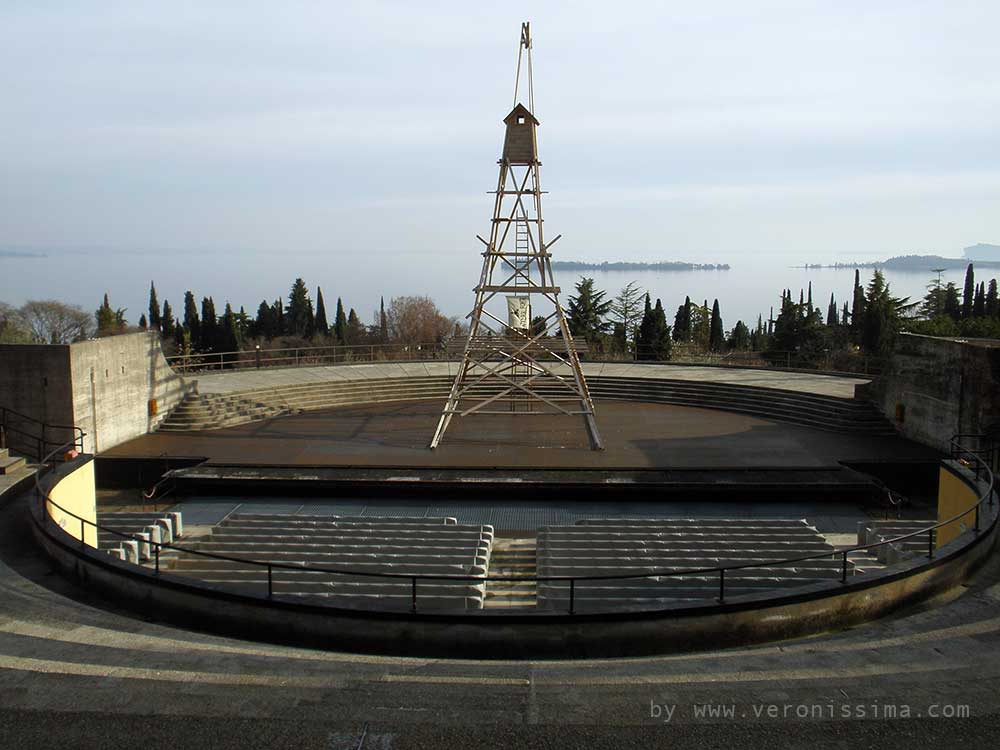
The west coast of Lake Garda is a very interesting destination for a guided tour or an educational visit. The themes that can be treated are mainly those related to the history of the twentieth century with Salò, capital of the Italian Social Republic in the last dramatic years of the Second World War and especially with Gardone Riviera and the Vittoriale degli Italiani, the last residence of the poet Gabriele D'Annunzio, a key figure in the political and literary history of Italy at the turn of the two world wars.
For any questions or more detailed information about guided tours of the Vittoriale degli Italiani and guided tours and educational itineraries, please contact the tourist guides of Lake Garda:
+39 333 2199 645 info@veronissima.com P.I. 03616420232 C.F. CPPMHL74L13L781C

 IT
IT 日本
日本 DE
DE FR
FR 中文
中文 ES
ES